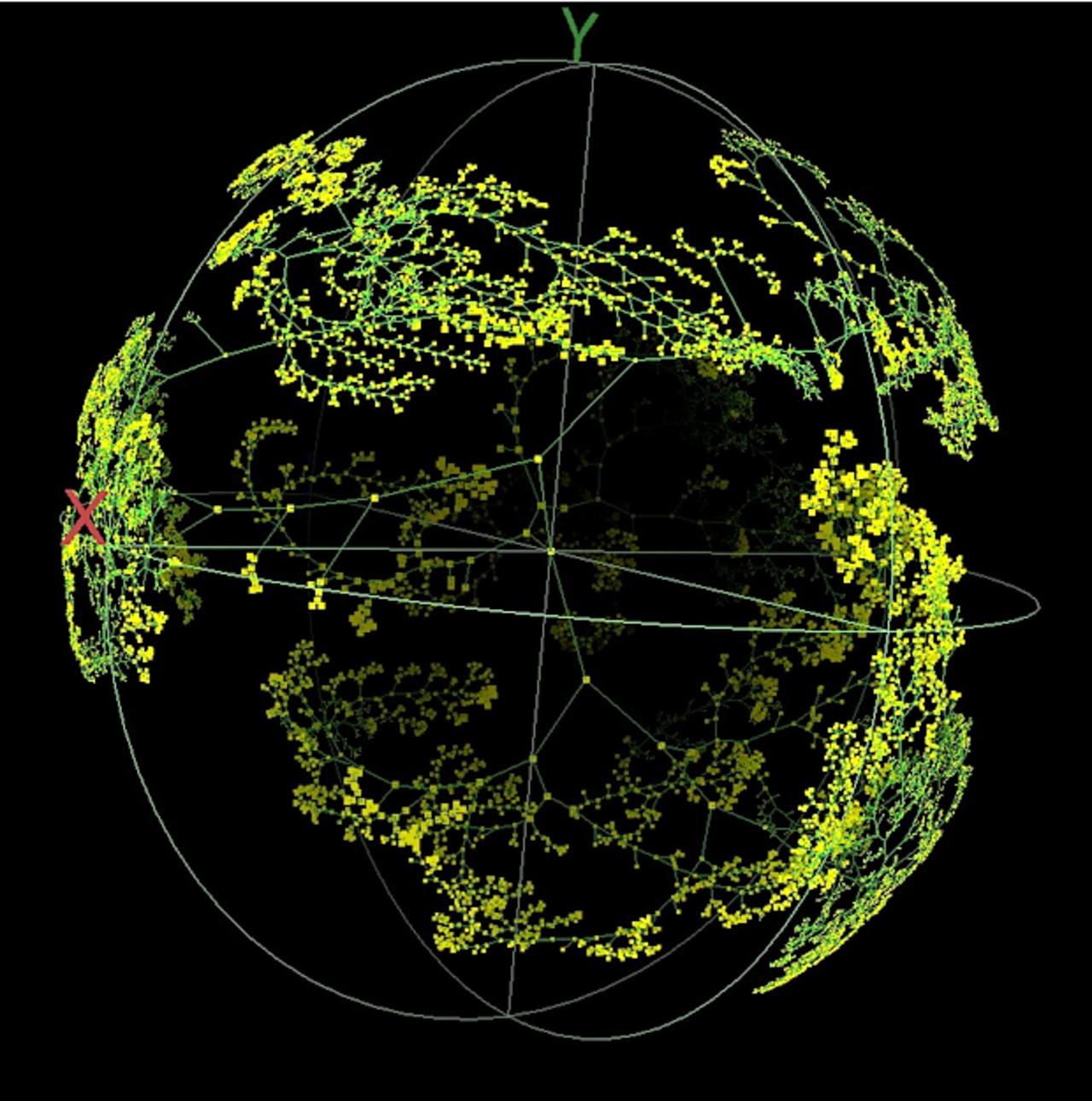Project
Microbiom analyses - method development and bioinformatics

Development of molecular methods to characterize the soil microbial communities from soils and other natural and technical habitats
The objective of this work is to develop a new methodological repertoire to characterize the diversity and functions of microbial communities and utlize this knowledge for protecting and exploiting these activities for a sustainable use in agroecosystems.
Background and Objective
Microbial activities provide the basis for a sustainable use of agricultural soil, growth promotion and pathogen defence of crops, degradation of organic material and their conversion to high quality fertilizers as well as to produce bioenergy.
All these beneficial activities are provided by collaboratiive efforts of microbial communities. Their single orgnaisms and their interaction within communities, as well as their variability in response to environmental changes are largely unkown.
New molecular methods based on direct analyses of nucleic acids provide a tool to understand such communities and to develop stratiegies to utilize these activities for an ecologically friendly agriculture.
Approach
Method development relates to those independent of cultivating microorganisms on nutrient containing media in the laboratory:
- Extraction and purification of nucleic acids (DNA, RNA) from environmental samples (soil, groundwater, gut contents, ...)
- PCR for quantification of microbial groups and genetic profiling von communities
- Sequencing of the microbiom from soils and other relevant habitats (compost, biogas reactors, ...)
- Optimization of bioinformatic tools to analyse large datasets
- Specific detection methods for beneficial and pathogenic microbial community members, the latter also with the objective to avoid experimental use of animals as much as possible.
- Connection of structural and functional microbial community analyses by using isotopically labelled nucleic acids, e.g. SIP (stable isotope probing)
Our Research Questions
Examples
- Who is doing what in a microbial community? Who cooperates, who fights with each other?
- How variable are the communities, which members are important for function, which members are not important? How does the diversity respond to enviromental changes?
Results
Methods were developed to extract DNA and RNA from soil and to characterize the identity and activity of soil microorganisms without the need of cultivation. A genetic profiling technique was developed which allows to study the impact of environmental factors on microbial communities at the scale of a whole agro-ecosystem.
New methods for sequencing metagenomis have been estabilshed, bioinformatic tools are now available
Thünen-Contact

Involved Thünen-Partners
Duration
Permanent task 1.2001 - 10.2024
More Information
Project status:
finished
Publications
- 0
Schrader L, Tebbe CC, Trautner J, Brischke C (2024) Ability of Perenniporia meridionalis to degrade selected European-grown hardwoods. Int Biodeterior Biodegrad 194:105863, DOI:10.1016/j.ibiod.2024.105863
- 1
Russell DJ, Tebbe CC, Ashwood F, Scheunemann N, Hohberg K (2024) Beeindruckende Vielfalt des Bodenlebens. Natur Landsch 99(9/10):426-435, DOI:10.19217/NuL2024-09-01
- 2
Zhang G, Bai J, Tebbe CC, Huang L, Jia J, Wang W, Wang X, Zhao Q, Wen L, Kong F, Xi M, He Q (2024) Habitat-specific responses of soil organic matter decomposition to Spartina alterniflora invasion along China’s coast. Ecol Appl 34(1):e2741, DOI:10.1002/eap.2741
- 3
Schrader L, Trautner J, Tebbe CC (2024) Mikrobielle Zersetzungsgemeinschaften von Bauholz. Biospektrum 30(5):530-532, DOI:10.1007/s12268-024-2258-y
- 4
Wang H, Dumack K, Rissi DV, Finn D, Bonkowski M, Tebbe CC (2024) Profiling the eukaryotic soil microbiome with differential primers and an antifungal peptide nucleic acid probe (PNA): Implications for diversity assessment. Appl Soil Ecol 200:105464, DOI:10.1016/j.apsoil.2024.105464
- 5
Krause SMB, Szoboszlay M, Dier M, Erbs M, Manderscheid R, Weigel H-J, Tebbe CC (2023) Impact of elevated atmospheric CO2 on the wheat rhizomicrobiome under the additional influence of warming, drought, and nitrogen fertilization. Eur J Soil Biol 117:103515, DOI:10.1016/j.ejsobi.2023.103515
- 6
Finn D, Schroeder J, Samad MS, Poeplau C, Tebbe CC (2023) Importance of sample pre-treatments for the DNA-based characterization of microbiomes in cropland and forest soils. Soil Biol Biochem 184:109077, DOI:10.1016/j.soilbio.2023.109077
- 7
Zhang G, Bai J, Tebbe CC, Huang L, Jia J, Kong F, Xi M, He Q (2023) Plant invasion threatens coastal blue carbon sequestration. Bull Ecol Soc Am 104(1):e02030, DOI:10.1002/bes2.2030
- 8
Finn D, Samad MS, Tebbe CC (2022) One-step PCR amplicon sequencing libraries perform better than two-step when assessing soil microbial diversity and community profiles. FEMS Microbiol Lett 369(1):fnac079, DOI:10.1093/femsle/fnac079
- 9
Zhang G, Bai J, Tebbe CC, Huang L, Jia J, Wang W, Wang X, Yu L, Zhao Q (2022) Plant invasion reconstructs soil microbial assembly and functionality in coastal salt marshes. Mol Ecol 31(17):4478-4494, DOI:10.1111/mec.16600
- 10
Finn D, App M, Hertzog LR, Tebbe CC (2022) Reconciling concepts of black queen and tragedy of the commons in simulated bulk soil and rhizosphere prokaryote communities. Front Microbiol 13:969784, DOI:10.3389/fmicb.2022.969784
- 11
Lerner H, Öztürk B, Dohrmann AB, Thomas J, Marchal K, De Mot R, Dehaen W, Tebbe CC, Springael D (2021) DNA-SIP and repeated isolation corroborate Variovorax as a key organism in maintaining the genetic memory for linuron biodegradation in an agricultural soil. FEMS Microbiol Ecol 97(5):fiab051, DOI:10.1093/femsec/fiab051
- 12
Finn D, Bergk-Pinto B, Hazard C, Nicol G, Tebbe CC, Vogel TM (2021) Functional trait relationships demonstrate life strategies in terrestrial prokaryotes. FEMS Microbiol Ecol 97(5):fiab068, DOI:10.1093/femsec/fiab068
- 13
Szoboszlay M, Tebbe CC (2021) Hidden heterogeneity and co-occurrence networks of soil prokaryotic communities revealed at the scale of individual soil aggregates. Microbiol Open 10(1):e1144, DOI:10.1002/mbo3.1144
- 14
Schroeder J, Kammann L, Helfrich M, Tebbe CC, Poeplau C (2021) Impact of common sample pre-treatments on key soil microbial properties. Soil Biol Biochem 160:108321, DOI:10.1016/j.soilbio.2021.108321
- 15
Hemkemeyer M, Tebbe CC (2021) Importance of soil primary particles for shaping the diversity and activity of soil microbial communities - Results of a meta-analysis. Verhandl Gesellsch Ökol 50: 128
- 16
Zhang G, Bai J, Tebbe CC, Zhao Q, Jia J, Wang W, Wang X, Yu L (2021) Salinity controls soil microbial community structure and function in coastal estuarine wetlands. Environ Microbiol 23(2):1020-1037, DOI:10.1111/1462-2920.15281
- 17
Geisen S, Hartmann M, Tebbe CC (2021) The European Journal of Soil Biology: A catalyst for soil biodiversity research. Eur J Soil Biol 102:103262, DOI:10.1016/j.ejsobi.2020.103262
- 18
Hernandez M, Vera-Gargallo B, Calabi-Floody M, King GM, Conrad R, Tebbe CC (2020) Reconstructing genomes of carbon monoxide oxidisers in volcanic deposits including members of the class ktedonobacteria. Microorganisms 8(12):1880, DOI:10.3390/microorganisms8121880

![[Translate to English:] [Translate to English:]](/media/_processed_/e/3/csm_Demetra2_c8a192c0f8.jpg)
![[Translate to English:] [Translate to English:]](/media/_processed_/e/2/csm_Demetra1_Panorama_8557ee3b13.jpg)





